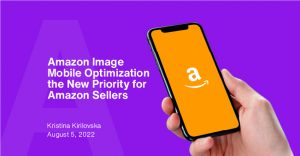What we learned from Amazon Prime Day 2022

This year again Amazon Prime Day breaks new records. According to Adobe Digital Economy Index data, Prime Day reached an incredible $11.9 billion in online sales which is an 8.5% growth compared to $11 billion in Prime Day online revenue in 2021.
Starting in 2015 as a 24 hours event to celebrate Amazon’s 20th anniversary this event turned into an annual tradition that provides prime members with the best deals all year long. This year Prime Day was hosted in the US and 15 other countries worldwide and took place on July 13-15. This was the first Prime Day event under the new CEO Andy Jassy, who took over Jeff Bezos last year after the Amazon founder stepped down.
In a press release, Amazon announced that this year’s Prime Day event was its “biggest” ever.
Company also revealed that during the two-day sales event sold more than 300 million items worldwide, which is an increase from the 250 million items sold in 2021’s event.
In addition, recent estimates show a sold gross merchandise of anywhere between $12.09 billion to $12.59 billion from Prime Day sales globally. However, the number is expected to get higher once the Prime Day event is hosted in India, Saudi Arabia, Egypt, and the United Arab Emirates, which were excluded from the initial dates.
Prime Day Order Insights
According to a study based on nearly 59,000 prime day orders and 4,800 verified buyer surveys, the average Prime Day order this year was $52.26, a 17% increase from $44.75 in 2021 when the average order size was lower compared to both 2020 and 2019.
Yet, from 21,306 unique households, nearly two-thirds or 62% placed 2+ separate orders, bringing the average household spend to roughly $144.56, which is the same or slightly less than last year.
Prime Day Item Insights
The two top-selling product categories this year were household essentials (29%) and health & beauty (28%). While the average price per item sold was $33.58; most items (58%) were sold for under $20 and only 5% were sold for over $100.
Discounts for toys (15%) and apparel (12%) remained the strongest. Categories that also saw noteworthy discounts included electronics (6%), TVs (3%), and computers (8%).
Prime Day Shopper Insights
The typical Prime Day shopper observed by Numerator was a high-income, suburban female age 35-44; and biggest lift in online spending came from Montana (172%), North Dakota (171%), and Alaska (166%)
60% of customers surveyed by Numerator said most of their purchases were either personal or household items. While 42% of customer purchases were specifically back-to-school items, 38% up from 2021, according to Blue Yonder. These statistics indicate that customers are reacting to larger socioeconomic trends and tend to focus their purchases on essential items, even when offered significant deals.
Interesting figures revealed by Amazon show $3 billion spent on more than 100 million items sold by small businesses on the third-party seller marketplace- suggesting that consumers focus on less expensive purchases which heightens the importance of outside sellers to large e-commerce retailers.
Additionally, it appears that online shoppers this year were prioritizing lowest prices for items over where they buy them, as 22% of surveyed Prime Day shoppers looked at prices outside of Amazon before buying.
Apart from the positive results, and another big win for Amazon, some claim that the online spending during Prime Day was not as big as it seems. The inflation of 9.1% (as of June) has dramatically impacted peoples’ spending and reshaped their customer behavior. In support of this goes the data from Numerator, showing that over 83% of Prime Day shoppers were impacted by the inflation. What is more, a little over a third of Prime Day shoppers waited for the sale to get a specific item at a discounted price, while 28% passed on a good deal because it wasn’t a necessity.
More to Explore

Why
Fliprise
Working with us means a distinctive and personal approach to your business. We are able to identify growth opportunities and bring you a step closer to your goals. We believe in open communication, transparency, and straightforwardness, and most of all - success.
Learn More

